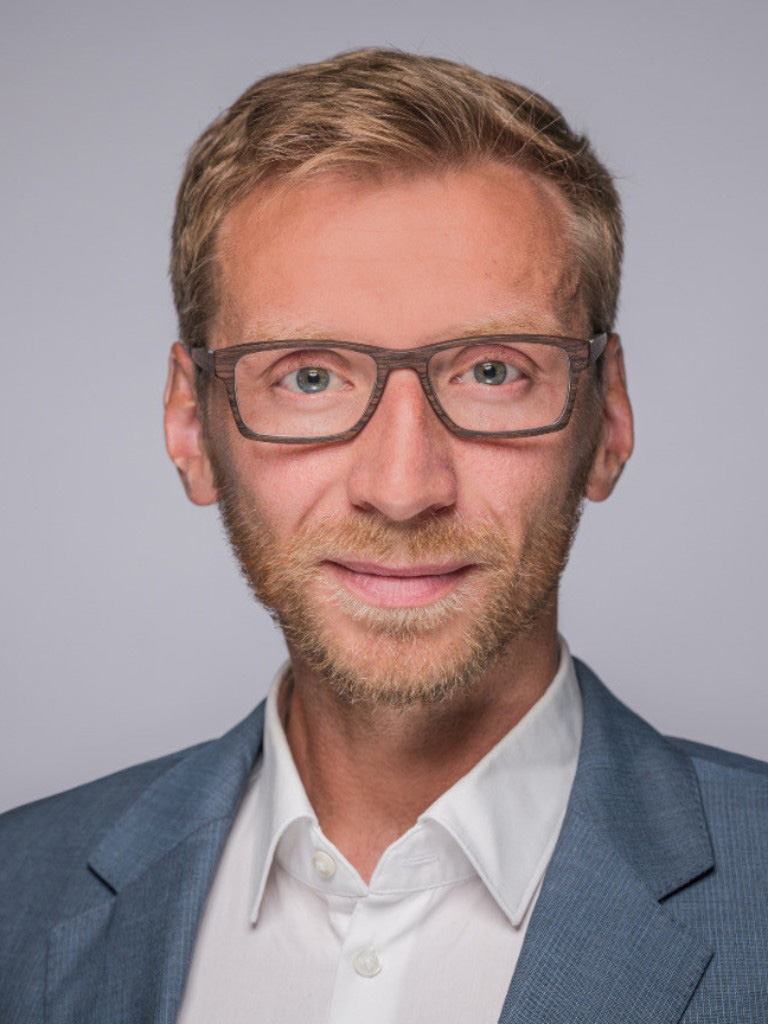What can your tool do at the moment?
We offer radiologists detailed AI-based volumetry, which is a spatial measurement method. Strictly speaking, we provide helpful information for medical diagnosis.
What diseases can usually be diagnosed with MR images of the brain?
We are focusing initially on dementia and multiple sclerosis, both are diseases in which volume changes are typical.
Can your tool automatically evaluate MR images and detect abnormalities?
The documented volumes are related to gender, age, head circumference and other individual patient factors. Machine learning or self learning algorithms – the heart of artificial intelligence – are needed to take these factors into account. By informing an algorithm with data sets from MR images, the system learns to compare and evaluate the measured volumes with corresponding norm groups. Over time, as data sets grow, the results become more accurate and meaningful.
What exactly does the radiologist get as a result?
Just a few minutes after the CT examination, the radiologist receives a brief report that shows conspicuous points – i.e. points that deviate from the norm and need to be examined more closely. A tabular and a graphical view provide information about the size and location.
What are you planning for the future and how will the doctor’s work change in interaction with intelligent systems?
We will develop our program beyond quantifying brain atrophies and enable it to suggest diagnoses to the doctor. This is very feasible for neurodegenerative diseases such as Alzheimer’s disease or multiple sclerosis. We are currently working towards this goal and consider it to be realistically achievable by 2020. As a result, doctors will be relieved of a lot of routine work. This saves them time and allows them to concentrate on activities that really require their expertise and experience.
What were the requirements of UX design in the current version of your application? Where do you see a need for UX in your future products?
In our current application, UX ensures that the representations of the complex information are well visualised: clear, useful and, indeed, attractive… After all, the radiologist is a visual person – looking at images precisely accounts for a large part of his work.
What will be the role of UX in the further development of your software?
We need the User Experience range of methods to guarantee not only comfortable operation but also correct operation. Because if an image is misinterpreted in radiology, it can lead to an incorrect diagnosis and, in the worst case, to incorrect treatment. During development, we strictly adhere to the requirements of the usability standard (IEC 62366-1: 2015), which is intended to guarantee usability in relation to the safety of the user interface. For example, summative evaluations such as heuristic analysis must be carried out by UX experts – whose traditional task is to analyse and optimise interactions between humans and machines.
You said that through artificial intelligence your software could offer diagnostics. What role will UX play in this?
Right now, the result of our application is a report, an output. In the next stage of development, however, more and more interactions between the radiologist and the learning system will take place. The diagnostic suggestions of the system, such as frontotemporal dementia, are of course not offered to the doctor as a black box.
… black box means: the doctor does not know how the system came to its conclusion?
Exactly. Instead, the system offers the doctor his derivation. This should be comprehensible on different levels, depths and granularities.
…so that the doctor can check with his experience and knowledge whether, or to what extent he agrees with the suggestion?
Exactly. And this is where the interaction with the system takes place, which we design according to UX and DIN standards: The doctor can change individual preliminary decisions that can lead to an entirely new diagnosis proposal. To achieve this transparent interactive decision process, with an outstanding user experience – that is what I see as the greatest challenge for the next two years.
Thank you very much for your time. We wish you success in your future endeavours!
For more information please visit mediaire.
Image source: mediaire





